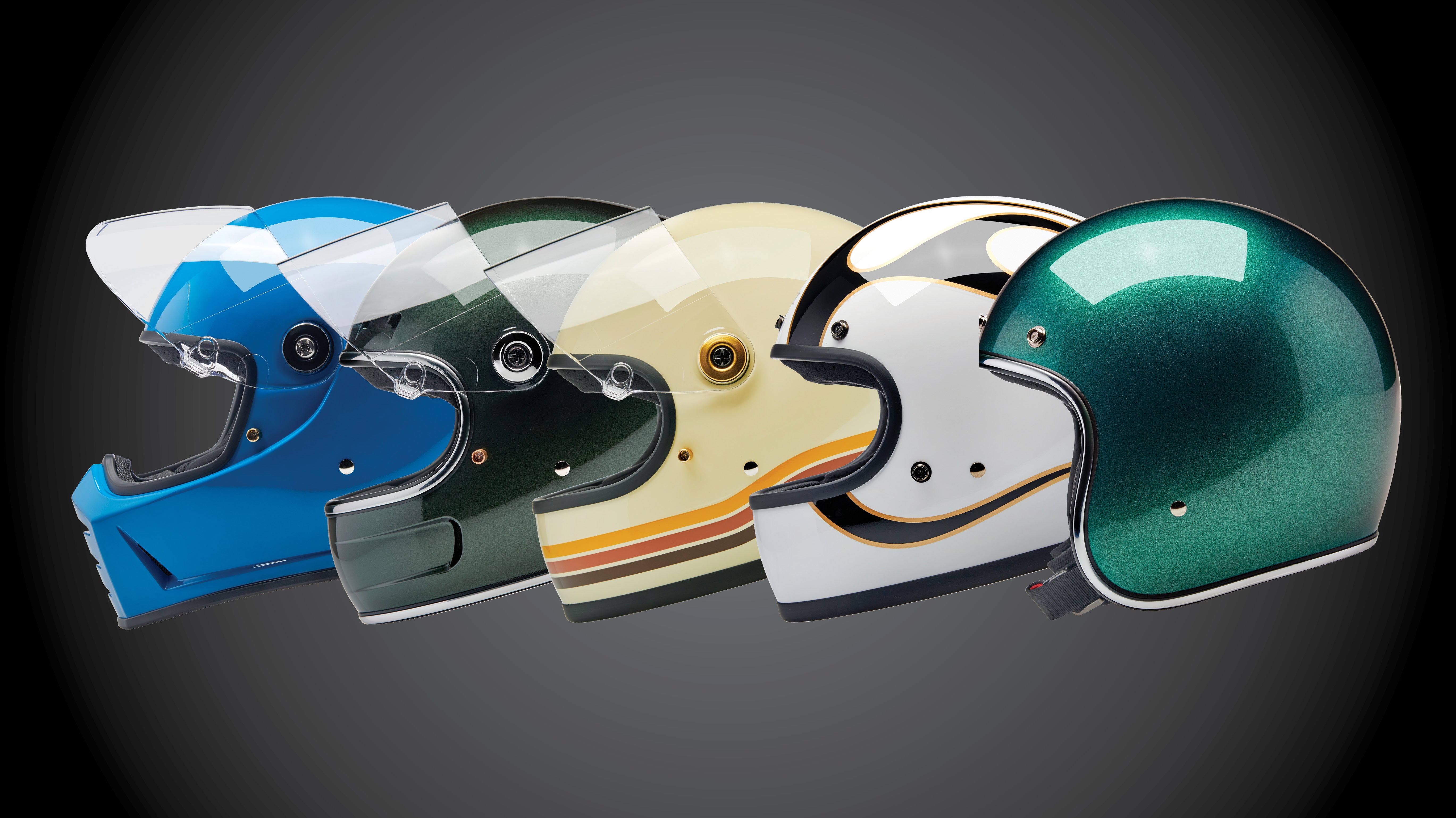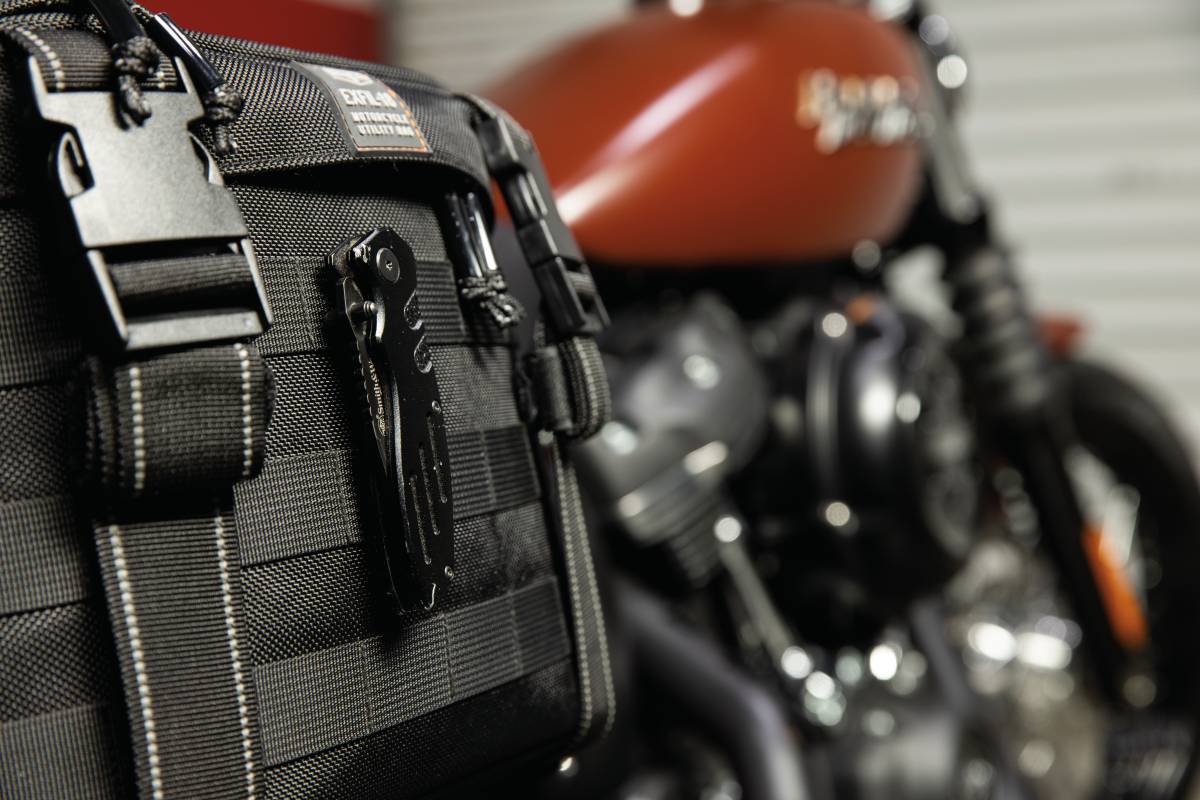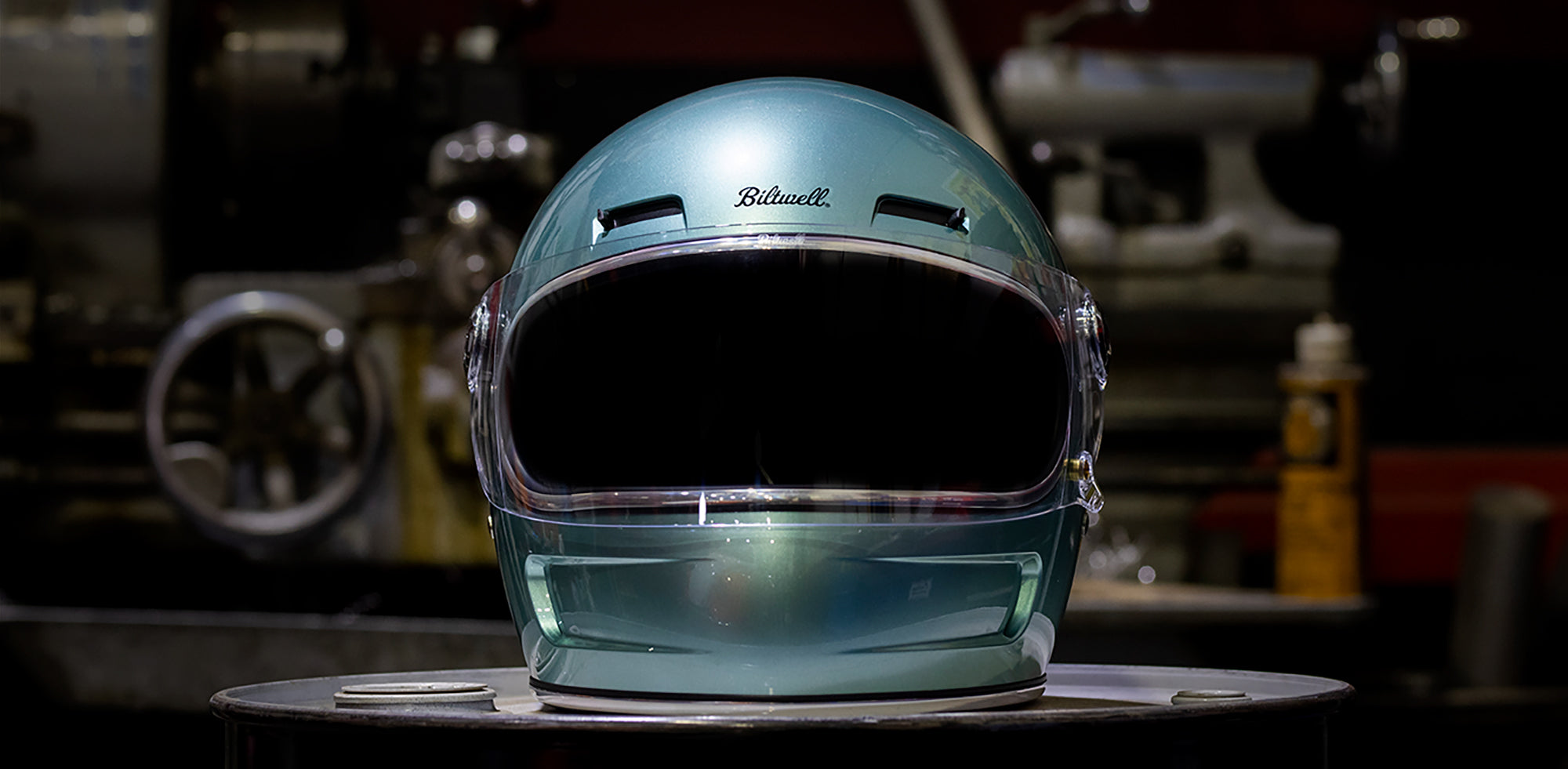Words by Harold McGruther / Photos by Geoff Kowlachuk

When he isn't working or riding, Mad Dog Competes in vintage motocross and desert races on an old Husqvarna Iron
In the seminal rockumentary “This is Spinal Tap,” fictional filmmaker Marty DiBergi quizzes make-believe metalhead Viv Savage about life in the topsy-turvy world of hard rock. After some rumination and a stiff belt from the wine bottle in his bubble bath, the quixotic keyboardist conjures a personal credo for the ages. “Have a good time all the time.”
Rob Reiner’s heavy metal magnum opus fooled a fair number of moviegoers in 1984, but one 14-year-old BMXer from SoCal who saw the flick on VHS didn’t take the bait. For the four decades I’ve known him, the comically gifted Chris Moeller has always been in on the joke. Forty years later, having a good time all the time is what this father, husband, serial entrepreneur, and Team Biltwell pro does best.

People who’ve ridden the El Diablo Run say it changes your life, no one more so than Mad Dog. Chris met his wife Melissa over boozy coconuts and a busted shovelhead in San Felipe in ‘07, and never looked back.
MAD DOGS AND ENGLISH, MAN
So how did a varsity wrestler and GATE student at Huntington Beach High cultivate the personal insouciance and professional chutzpah to launch an entire BMX revolution? As with other cultural shape shifters, Nature and Nurture came into play. Long before he was bitten by the BMX bug in the early ‘80s, Chris’s parents used to drag their clan to Saddleback Park, the legendary motocross mecca on the OC/Riverside county line. Chris was raised on dirt bikes, but being a grom from Huntington Beach, surfing and skating were also in his DNA. Of course, every kid who skated in the ‘80s hung out at Big O skatepark, and Chris was no exception. Orange County was the epicenter of the action sport universe in those days, and Big O and the YMCA BMX track on the other side of the 55 freeway provided gravity for a generation of shredders. On these stomping grounds Chris met 20-inch legends Stu Thomsen, Greg Hill, Eddie Fiola, and a BMXer from Riverside county named Jeremy McGrath. “I might have raced Jeremy once or twice, but I don’t remember it. “We mostly rode BMX together at some dirt trails in Fullerton around ‘84. “Years later I was riding some trails near Lake Elsinore, and Jeremy jumped the six-pack on his 250. “Last year Jeremy raced BMX at a vintage event in NorCal and did great.” As Mad Dog’s tale about Supermac confirms, once BMX sinks its teeth into you, it never lets go.

In the stormy sea of modern BMX companies, Mad Dog is the captain of a hardworking crew on a tight little pirate ship.
BUSTING ASS
Fearlessness on the the bike and a one-legged ass kicker’s work ethic off it fueled Chris’s rapid ascent in the nascent BMX industry years before he started his own company. Odd jobs in his teen years included packaging number plates for Rich Long at GT, stickering forks for Chuck Robinson at his eponymous bike brand, and laminating membership cards for Bob Morales at the American Freestyle Association. The side hustle that changed Chris’s life was being a crash test dummy at “BMX Action” magazine. Chris’s co-workers at Wizard Publications included artist and ‘zine pioneer Andy Jenkins and Spike Jonze, a similarly gifted prankster and eventual Oscar-winning filmmaker. This monkey work offered no challenge or reward to Chris’s fertile mind, but gave him enough cabbage to call BMX his full-time job. It also showed him the right and wrong ways to run a small business. Decades after some of these companies and their founders were dead and gone, Chris Moeller and S&M are still going strong.
Being surrounded by successful entrepreneurs and generational talents was a master class in ass-kicking, and Chris took copious notes. Of course, it wasn’t all fun and games. Bike testing is hard work, and Chris paid for all those magazine covers—more than 20 in his glory days—with flesh and bone. “Riding BMX and racing vintage motocross for 40 years has taken its toll. “I’ve broken my hands, and have plates and screws in both of them. “I’ve had ACL replacements, a hernia mesh repair, and more staples, stitches, casts, and concussions than I can remember.”
Many of Chris’s fractures and dislocations went untreated over the years, and that led to other problems. “After years of excruciating pain—hardtail choppers and kick starters certainly didn’t help—I eventually had my left hip replaced. “A few years later surgeons replaced my right hip, followed closely by a major shoulder rebuild due to an irreparable rotator cuff injury.” In every instance, persistent pain or a lack of strength and mobility was the tipping point. As Chris told me when I was rehabbing my own total knee replacement two years ago, “Take care of those injuries when they happen the first time, and do the PT!”
HEAVY METAL
The late ‘80s were The Golden Age for America’s BMX industry, with brands like GT, Haro, Mongoose, Hutch, Diamondback, CW, Redline, JMC, and others selling nearly a million frames and mass-produced complete bikes every year. Mad Dog’s job at BMXA was to thrash these bikes for photos. Moeller’s manic riding style gave credence to the moniker a wrestling coach saddled him with in high school, and a regrettable but enduring persona was born. “Mad Dog is one of the lamest nicknames ever—right up there with Flyin’ Brian, Insane Wayne, and Radical Rick. “The editor at BMX Action pushed the whole Mad Dog thing hard. “Keep in mind that guy’s name was ‘gOrk,’ a word that describes dudes with a really long neck.” I know from experience that a childhood nickname can take you far in the bicycle industry, so I’ll never bust Chris’s balls on this one.
When Moeller finally grew tired of destroying shitty BMX bikes, he and his friend Greg Swingrover convinced Cook Brothers, an early BMX brand and fab shop in SoCal, to build two custom frames. Moeller’s K-9 D-zine prototype featured larger O.D. 4130 chromoly tubing, double-thick axle dropouts, and a reinforced head tube to resist collapsing like a folding chair when stunts went sideways. Chris and Greg showed their beefy BMX bikes to friends, and 35 trail kids and street riders took the bait. In 1987, S&M Bikes was born.
TAKING IT TO ELEVEN
After Swingrover aged out of the business, Chris wiggled out of some shady relationships with fab shops and distributors and assumed sole ownership of his brand. Several years later Moeller purchased a 10-thousand-square-foot warehouse in Santa Ana and began building frames, forks, and handlebars on US soil. Today S&M is pedaling furiously towards its fortieth year in business in the capable hands of fellow riders and lifelong friends. With a ton of help from his equally hard-working, self-made wife Melissa, Chris works remotely on marketing, product design, and myriad other small business responsibilities from their second home in Pagosa Springs, CO. There were no BMX jumps in this rustic vacation destination when he moved there, so a couple years ago Chris bought a chunk of land and enlisted dirt sculptor Dave King from Pennsylvania to help build The Pond, the private trails Chris rides almost every day. When he isn’t working or riding, Chris races vintage motocross on a ’74 Husqvarna CR250, and he’s prepping a Husky WR400 to race the Biltwell 100 in the Mojave desert. Mad Dog has stood on the top box in his class at our annual desert race three years running, so we like his chances of making it a four-peat on his latest open-class desert sled.
After 40 years of hard-core riding, non-stop nonsense, and daily hustle, Chris Moeller is the undisputed king of American BMX. Getting there wasn’t easy, and often required doing and saying things people didn’t want to hear. Fortunately, Spinal Tap gave Chris another pearl of wisdom, this one from the band’s lead guitarist Nigel Tufnel. “When anything you’re doing needs that little push over the cliff, turn it to 11.”
 Shop All Helmets
Shop All Helmets Shop All Optics
Shop All Optics Shop All Accessories
Shop All Accessories Shop All Gloves
Shop All Gloves Shop All Luggage
Shop All Luggage Shop All Apparel
Shop All Apparel Shop All Etc.
Shop All Etc. Outlet
Outlet WTF Blog
WTF Blog




